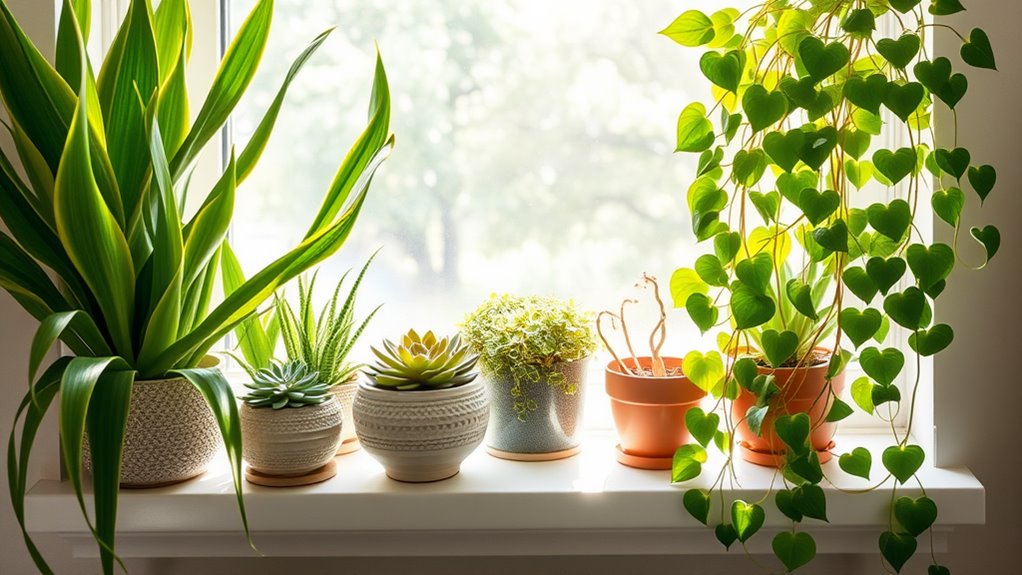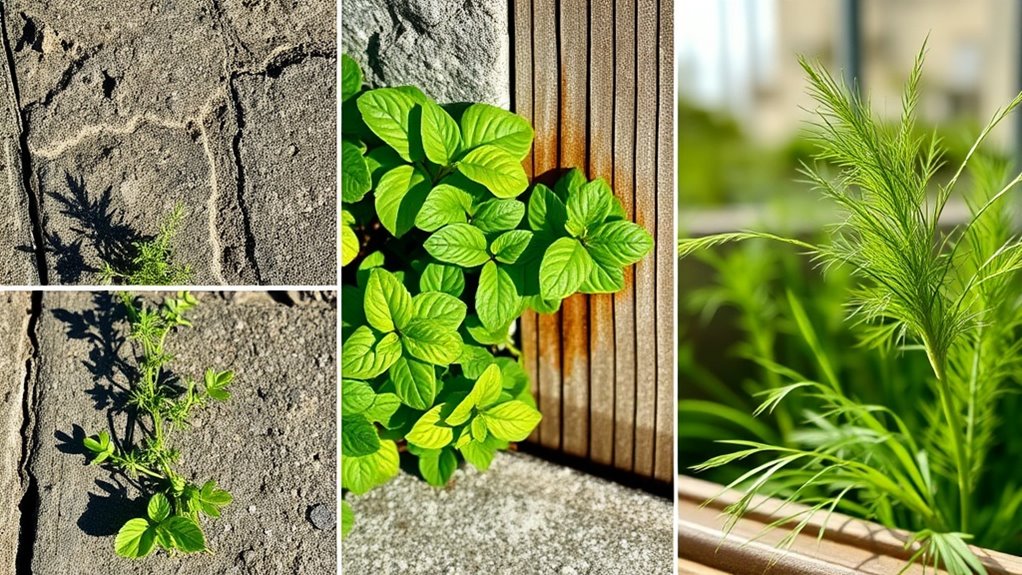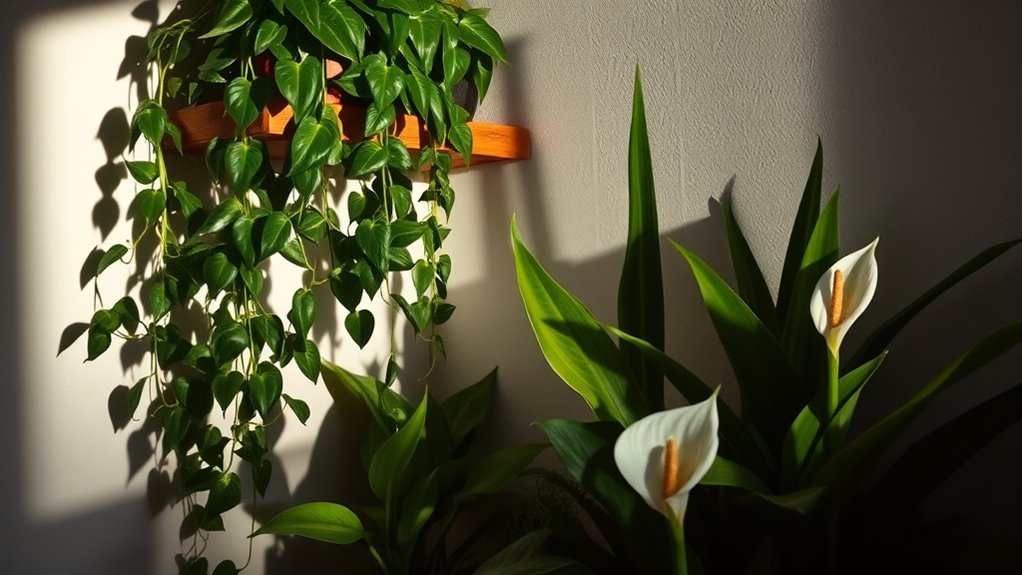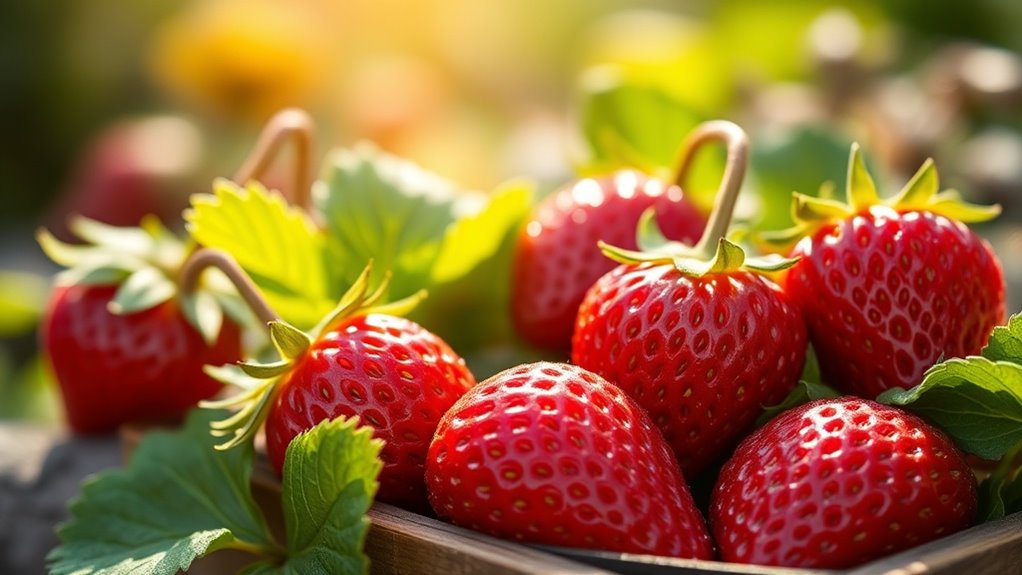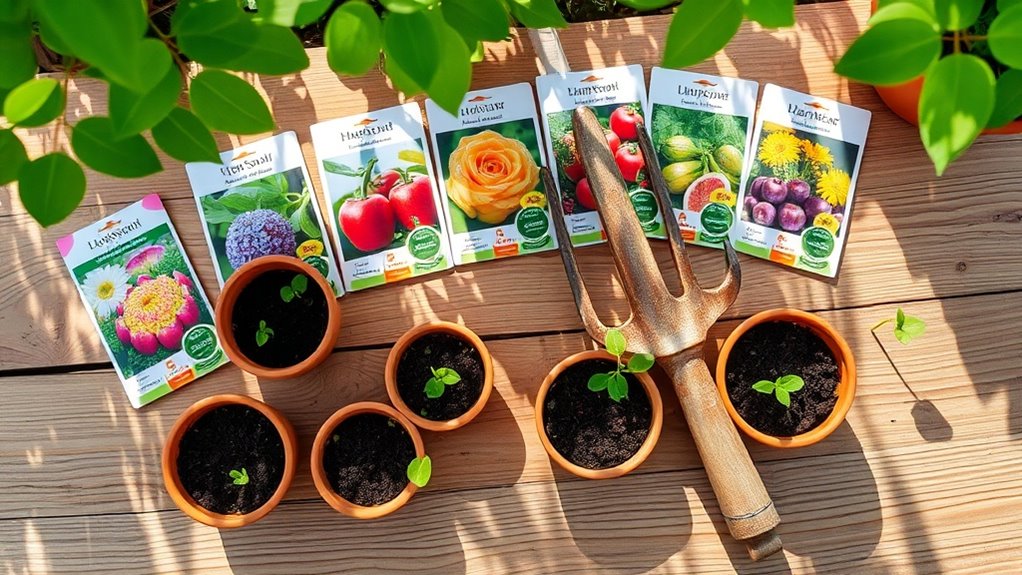Low-Maintenance Indoor Plants That Even Forgetful People Can Keep Alive
Did you know that over 30% of indoor plants die within the first year due to neglect? If you often forget to water or care for your greenery, you’re not alone. Fortunately, there are several low-maintenance indoor plants that can thrive in your home with minimal effort. From the resilient Snake Plant to the forgiving ZZ Plant, these options can enhance your space. Want to discover which plants can fit seamlessly into your lifestyle?
Key Takeaways
- Snake Plants thrive in low light and require infrequent watering, making them perfect for neglectful plant owners.
- ZZ Plants store water in their rhizomes, allowing them to survive for weeks without attention.
- Pothos adapts to various lighting conditions and only needs watering when the top inch of soil is dry.
- Spider Plants are low-maintenance, producing oxygen while requiring minimal watering and fertilizer.
- Cast Iron Plants endure irregular watering and lower temperatures, making them resilient in various indoor environments.
Snake Plant
The Snake Plant, also known as Sansevieria or Mother-in-Law’s Tongue, is a resilient indoor plant that requires minimal care. It’s one of the easiest indoor plants to maintain, thriving in low light and tolerating neglect.
Water it sparingly; overwatering can lead to root rot. Ideally, let the soil dry out between watering sessions.
This plant also improves indoor air quality by filtering toxins, making it a practical choice for any home.
With its tall, striking leaves, it adds aesthetic appeal while requiring little attention.
Position it in a well-draining pot, and you’ll enjoy its beauty with minimal effort. Additionally, the Snake Plant is known for its filtering toxins ability, which enhances its benefits as an indoor plant.
ZZ Plant
Renowned for its durability, the ZZ Plant (Zamioculcas zamiifolia) is another top choice for those seeking low-maintenance indoor greenery.
This resilient plant thrives in various conditions, making it perfect for forgetful plant parents.
Here’s what you’ll love about it:
- Low Light Tolerance: It thrives in low light and indirect sunlight.
- Drought Resistant: You can skip watering for weeks; it stores water in its rhizomes.
- Air Purifying: It helps improve indoor air quality by filtering toxins.
- Pest Resistant: Rarely affected by common houseplant pests.
Additionally, the ZZ Plant is known for its low maintenance requirements, making it an ideal choice for those who may forget to care for their plants.
Add the ZZ Plant to your collection for effortless greenery!
Pothos
Pothos (Epipremnum aureum) is a fantastic choice for indoor gardeners who want a vibrant touch with minimal effort.
This resilient plant thrives in various lighting conditions, from low light to bright indirect sunlight.
Water it only when the top inch of soil feels dry, preventing overwatering.
Pothos can tolerate neglect, making it perfect for forgetful plant owners.
Its trailing vines can reach lengths of 10 feet or more, enabling creative displays.
Regular pruning encourages bushier growth and removes any yellowing leaves.
Additionally, it’s known for purifying indoor air, enhancing your living space’s atmosphere while requiring minimal care. Moreover, Pothos is particularly effective at removing common indoor air pollutants, making it a beneficial addition to your home.
Spider Plant
Spider plants are incredibly easy to care for, requiring minimal attention while thriving in a variety of indoor environments. Their ability to purify air and adapt to different light conditions makes them a popular choice for any space. You’ll appreciate their resilience and the aesthetic appeal they bring to your home or office. Additionally, spider plants are known for their low-light tolerance, which allows them to flourish in dimly lit areas of your home.
Easy Care Guidelines
The Spider Plant (Chlorophytum comosum) thrives with minimal effort, making it an ideal choice for both novice and experienced plant enthusiasts.
To keep your Spider Plant healthy, follow these easy care guidelines:
- Light: Place it in bright, indirect sunlight; it tolerates low light but grows best in bright conditions.
- Water: Water when the top inch of soil feels dry; avoid overwatering to prevent root rot.
- Temperature: Maintain a temperature range of 65-75°F (18-24°C) for optimal growth.
- Fertilizer: Feed with a balanced liquid fertilizer every 4-6 weeks during the growing season.
Benefits of Spider Plants
One of the standout features of the Spider Plant is its remarkable ability to purify indoor air. It effectively removes pollutants like formaldehyde and xylene, enhancing your living environment. Additionally, Spider Plants are low-maintenance, thriving in various light conditions. They also produce oxygen, contributing to better air quality.
| Benefit | Description |
|---|---|
| Air Purification | Removes toxins and improves air quality |
| Oxygen Production | Enhances breathability in your space |
| Low Maintenance | Requires minimal care and attention |
| Aesthetic Appeal | Adds vibrant greenery to your home |
With these advantages, Spider Plants are an excellent choice for any indoor space.
Peace Lily
A Peace Lily is an excellent choice for anyone seeking a low-maintenance indoor plant that enhances both aesthetics and air quality.
With minimal care, you’ll enjoy its elegant blooms and air-purifying qualities.
Here are some key points to consider:
- Light Requirements: Thrives in low to medium light; avoid direct sunlight.
- Watering Needs: Water when the top inch of soil feels dry; it’s forgiving if you forget occasionally. Be cautious, as overwatering plants can lead to serious health issues for your Peace Lily.
- Humidity: Prefers higher humidity but adapts well to average home conditions.
- Toxicity: Slightly toxic to pets if ingested, so place it out of reach.
Cast Iron Plant
Known for its resilience, the Cast Iron Plant (Aspidistra elatior) is a perfect choice for those who want a hardy indoor plant that requires little attention.
Thriving in low light and tolerating neglect, it’s ideal for forgetful plant owners.
The Cast Iron Plant can withstand irregular watering, but it’s best to let the soil dry out between waterings.
A temperature range of 60-75°F is optimal; it can handle cooler conditions too.
Its dark green, glossy leaves add an aesthetic appeal, while its ability to purify the air enhances indoor environments.
With minimal care, it flourishes beautifully in any space. Additionally, it is essential to avoid overwatering plants, as this is a common mistake that can lead to root rot.
Rubber Plant
When caring for a Rubber Plant, you’ll find its requirements straightforward, making it an excellent choice for busy individuals.
This plant thrives in bright, indirect light, so position it accordingly to optimize growth.
Additionally, keeping an eye out for common pests like spider mites and mealybugs will help maintain its health and vibrancy. To further enhance its growth, consider using a well-draining potting mix that allows for proper water drainage to prevent root rot.
Care Requirements Simplified
Although rubber plants thrive in a variety of conditions, their care requirements are surprisingly straightforward.
To keep your rubber plant healthy, follow these simple guidelines:
- Watering: Let the top inch of soil dry out before watering; overwatering can lead to root rot.
- Humidity: Aim for moderate humidity; misting occasionally can help if your home is dry.
- Fertilizing: Feed with a balanced fertilizer every 4-6 weeks during the growing season.
- Pruning: Trim any yellowing leaves or wayward growth to maintain shape and promote new growth.
With these easy steps, you can enjoy a thriving rubber plant!
Ideal Lighting Conditions
Proper lighting is vital for maintaining the health and vibrancy of your rubber plant. Ideally, place it in bright, indirect sunlight for optimal growth.
Direct sunlight can scorch the leaves, while low light may cause stunted growth and leaf drop.
A north or east-facing window is usually best, but you can also use sheer curtains to diffuse harsh rays.
If natural light is limited, consider supplementing with fluorescent or LED grow lights.
Monitor your plant’s response; if you notice pale leaves or leggy growth, it’s time to adjust its lighting conditions to ensure it thrives in your indoor environment.
Common Pests Management
Pest infestations can pose a significant threat to the health of your rubber plant. To effectively manage common pests, follow these steps:
- Regular Inspections: Check leaves and stems weekly for signs of pests like spider mites or mealybugs.
- Isolation: If you spot any pests, isolate the affected plant to prevent spreading.
- Natural Remedies: Use insecticidal soap or neem oil to treat infestations; apply according to product instructions.
- Maintain Humidity: Increase humidity around your rubber plant to deter pests, as they thrive in dry conditions.

